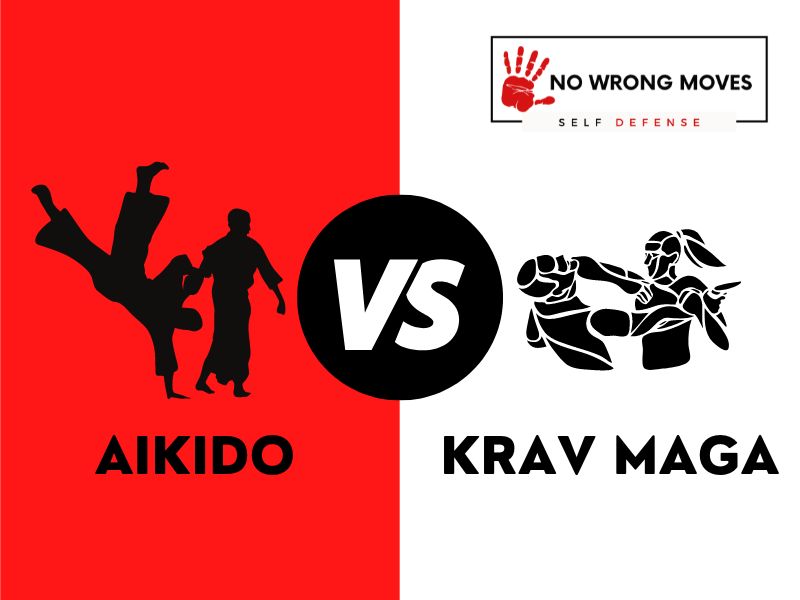
- What We Know About Aikido
- What We Know About Krav Maga
- Key Elements Of Aikido
- Key Elements Of Krav Maga
- Aikido Rankings & Levels
- Krav Maga Rankings & Levels
- Aikido Vs. Krav Maga Attire
- What A Typical Aikido Training Session Looks Like
- What A Typical Krav Maga Training Session Looks Like
- Aikido Movies
- Conclusion: Aikido Vs. Krav Maga
Many people in the martial arts community debate whether Aikido or Krav Maga is the better practice. While both offer unique benefits and principles, there are some key differences that set them apart.
The main difference between Aikido and Krav Maga is the intent.
Aikido is a defensive martial art, focused on resolving conflicts peacefully and harmoniously. It uses redirecting movements to subdue an attacker without causing harm.
Krav Maga, on the other hand, is a hybrid self-defense system developed for military use. It is intended for survival in life-threatening situations, and its techniques are designed to incapacitate or eliminate the attacker as quickly as possible.
Another key difference is the training methods. Aikido emphasizes mindfulness and control, while Krav Maga focuses on rapidly executing efficient and effective counterattacks. This can be seen in the speed at which techniques are practiced in each discipline.
In Aikido, practitioners take their time to perfect movements and achieve fluidity and grace in execution. In Krav Maga, actions are performed at full speed with intensity, simulating real-life scenarios as closely as possible.
What We Know About Aikido
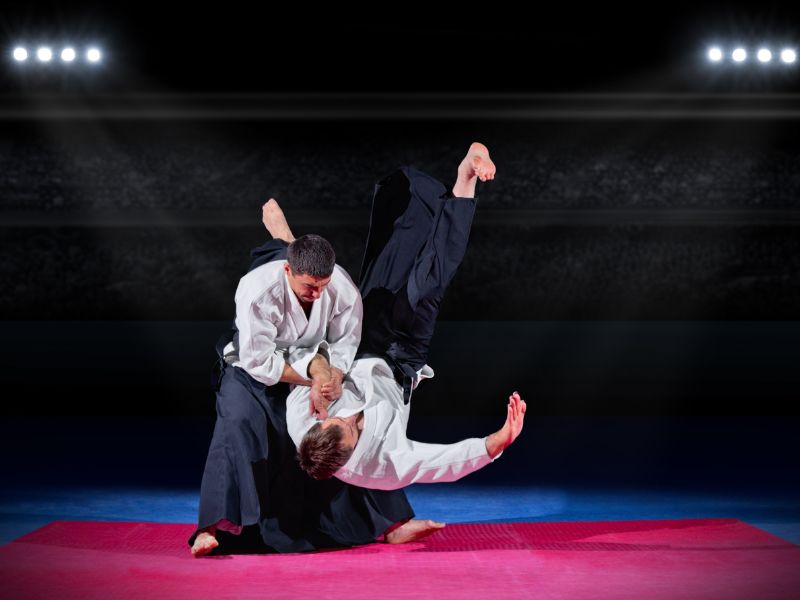
Aikido is a modern martial art that was created in the early 20th century by Morihei Ueshiba. It is based on the principles of budo, which follows the code of ethics of bushido.
Bushido is the code of ethics that samurai follow and teaches justice, courage, benevolence, politeness, honesty, honor, and loyalty.
Aikido is a combination of aikijujitsu, which is a martial art that uses both unarmed and armed fighting techniques, and iai-jutsu, which is a martial art that uses swordsmanship.
Aikido employs unarmed techniques, such as strikes, joint locks, and throws to subdue an opponent. It also makes use of weapons such as knives, swords, and sticks to defend against an attacker.
Aikido practitioners believe that one should only use the amount of force necessary to achieve their goals.
They also believe in using an opponent's momentum against them in order to control them rather than harm them.
Aikido is a challenging but rewarding martial art to study. It requires hefty discipline and dedication to master its techniques.
Thankfully though, the rewards are great for those who persevere, especially since Aikido can provide its practitioners with a sense of confidence and inner peace. It can also teach them how to better defend themselves and others in dangerous situations.
What We Know About Krav Maga
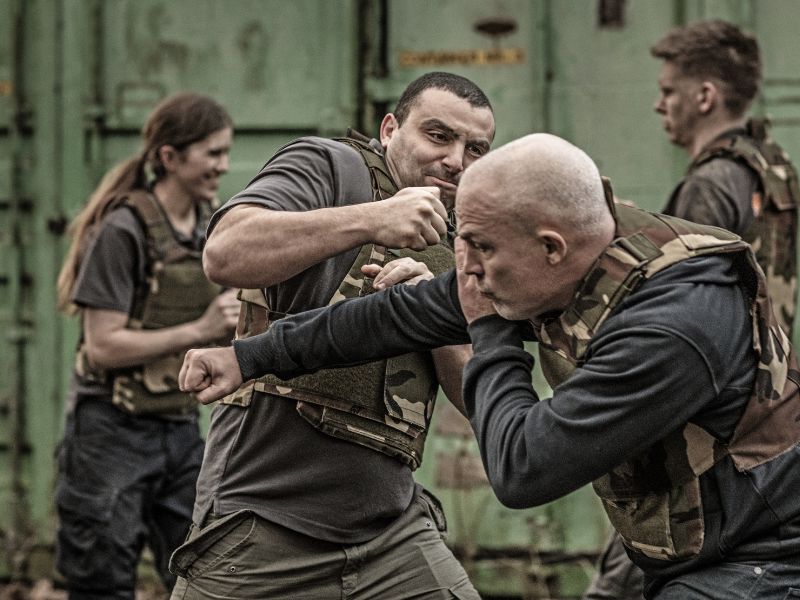
Krav Maga is a self-defense system that was developed for the Israeli military. It is a very practical system that is designed to be used in real-world situations. Krav Maga focuses on techniques that are easy to learn and can be used quickly in a fight.
Krav Maga is one of the best martial art forms for self-defense out there. The foundation of Krav Maga is based on a few simple principles that can be applied in any situation. First, Krav Maga teaches that it is better to prevent an attack than to try to defend against one.
Krav Maga was developed specifically for self-defense in the real world, and that absolutely involves the kinds of high-pressure situations that the Israeli military often finds itself in.
Meanwhile, Aiki Jujutsu has its roots in traditional Japanese martial arts and is more focused on personal growth through discipline and self-control.
Krav Maga also tends to be more aggressive in its tactics, using strikes to sensitive areas and even weapon usage when necessary.
Second, Krav Maga teaches that it is better to defend yourself with whatever you have available, rather than trying to find the perfect weapon or technique.
Third, Krav Maga teaches that it is better to strike first and strike hard, rather than to wait for your attacker to make the first move. These simple principles make Krav Maga an extremely effective self-defense system.
Of course, this is only a brief history and understanding of Aikido and Krav Maga, but if you want to go deeper into either art, be sure to check out the following posts:
Now, back to the comparison...
Let's look at the origins of the respective disciplines and then compare the key elements of their practices. You will be able to understand some of their similarities and differences a bit better afterward.
| Aikido | Krav Maga | |
| Origins | Japanese | Israeli |
Key Elements Of Aikido
Aikido is a Japanese martial art that focuses on the proper stance and balance of the practitioner. Proper stance and balance are critical components of Aikido, as they provide the foundation for all other techniques.
A stable and balanced stance allows the practitioner to move fluidly and with control, making it easier to perform techniques effectively.
In Aikido, practitioners learn to redirect their opponent's energy rather than using force against them. Redirecting energy is one of the fundamental aspects of Aikido, and it's difficult to separate this idea from the sport itself.
Through properly redirecting an opponent's energy, Aikido practitioners can use their opponent's momentum against them, rather than relying on their own strength.
Apart from physical techniques, Aikido also emphasizes controlling one's emotions. Practitioners learn to remain calm and focused, even in stressful situations.
Aikido also places a strong emphasis on non-violent conflict resolution. The first option in any situation is to find a peaceful resolution, rather than resorting to violence.
Remember that in Aikido, the first option is not violence, and it reflects the overall philosophy of Aikido as a martial art focused on peace and harmony.
Key Elements Of Krav Maga
Krav Maga, a highly effective self-defense system, comprises five essential elements. Firstly, simplicity is a key component of Krav Maga's design, ensuring that it is easy to learn and use effectively for anyone.
Next up, Krav Maga's realism is based on real-world situations, making it highly effective for self-defense.
Adaptability is also a crucial feature of Krav Maga. Moves should be adapted to any situation, making them suitable for various environments.
Next is self-defense. Krav Maga is a self-defense system specifically designed to assist individuals in protecting themselves from physical attacks.
Krav Maga also offers physical and emotional benefits, as befitting a system that is great for both physical fitness and self-defense.
Another thing I think is important to look at is the different rankings and levels in each art. if you are looking to take up either Aikido or Krav Maga, whether as a hobbyist or to compete, you need to understand the different levels of proficiency and what is required for testing and ranking.
Aikido Rankings & Levels

Aikido is a discipline that has different levels, each represented by a different colored belt. The first level is white belt, which is for beginner students. Once you have mastered the basics of Aikido, you can move on to the blue belt, which is for intermediate students.
And finally, once you have mastered the art of Aikido, you can become a black belt, which is the highest level. There are three degrees as a black belt holder: 1st dan, 2nd dan, and 3rd dan black belt. In order to achieve each of these degrees, you must pass a test that proves your mastery of Aikido.
There are also other ranks and colors that exist outside of the traditional ranking system. In some Western Aikido schools, there are more ranks added in between 1st dan and 2nd dan. These ranks can be any combination of colors but typically follow this sequence: black, white, brown, blue. This allows for students to be promoted at a more gradual pace and helps to distinguish between students of different ranks.
Krav Maga Rankings & Levels
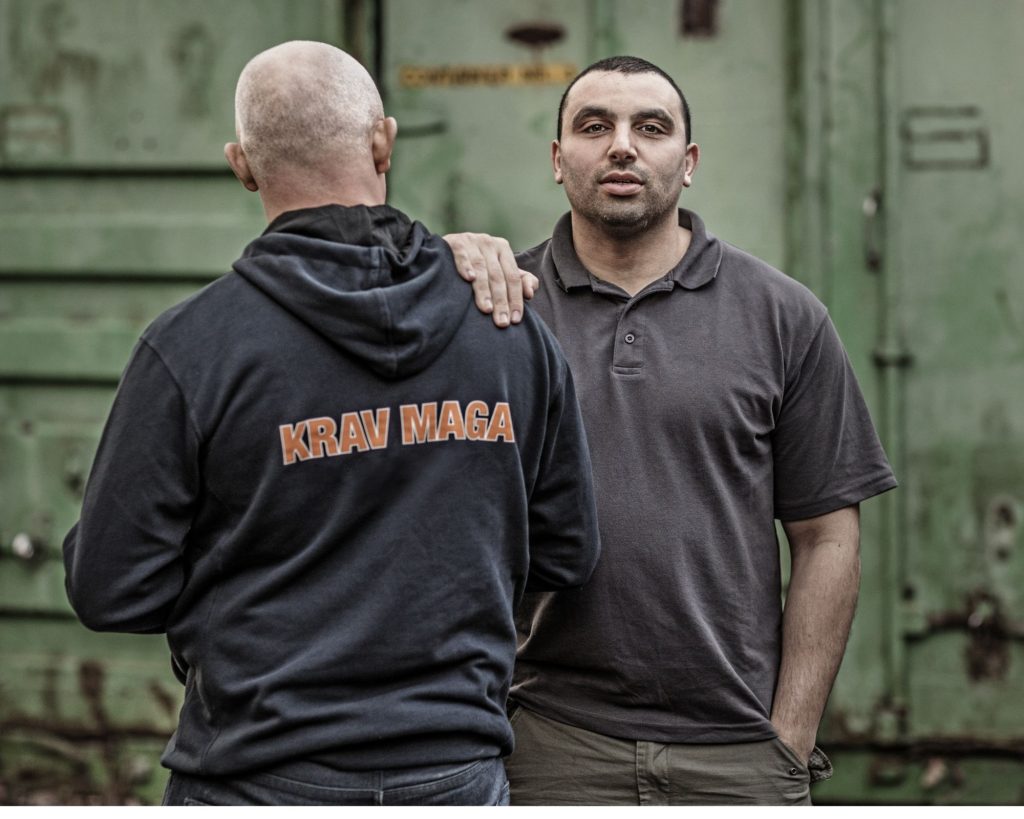
Krav Maga has a graduated system of instruction, which begins with the most basic techniques and progresses to more advanced methods. In order to achieve each level, students must demonstrate proficiency in the techniques associated with that level.
Level 1 is designed for people with no prior martial arts experience. At this level, students learn how to defend themselves against basic attacks, such as punches and kicks. They also learn how to deal with grabs and holds.
Level 2 builds on the skills learned in Level 1. Students learn how to defend themselves against more advanced attacks, such as headbutts and knee strikes. They also learn how to deal with more dangerous grabs and holds, such as chokeholds and armlocks.
Level 3 builds on the skills learned in Levels 1 and 2. Students learn how to defend themselves against even more advanced attacks, such as eye gouges and groin strikes. They also learn how to deal with even more dangerous grabs and holds, like hair pulls and wrist locks.
Level 4 builds on the skills learned in Levels 1, 2, and 3. Students learn how to defend themselves against armed attacks, such as lethal attacks delivered with a weapon. They also learn how to deal with even more dangerous grabs and holds, such as chokes from behind.
Aikido Vs. Krav Maga Attire
This section simply compares the clothing and uniforms that practitioners wear in combat.
Aikido Attire:
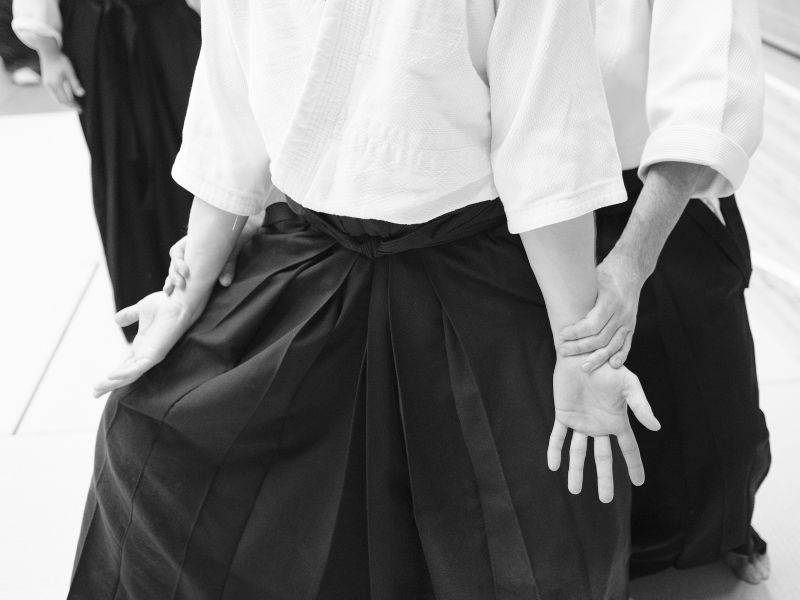
Most aikido practitioners wear a white dogi, or “uniform.” The dogi is a loose-fitting cotton kimono with a belt. In some schools, aikido students also wear hakama, which are pleated trousers that are tied at the waist and fall below the knee. Male practitioners often don white tabi (socks), while female practitioners often wear white zori (wooden sandals). Some people also choose to practice without any clothes on in order to better feel their body and movements. However, this is not common.
Krav Maga Attire:

Krav Maga practitioners wear a variety of clothing, depending on their climate and the environment. They're not all too strict about this, at least compared to other martial arts. In hot weather, they often wear light clothing, such as shorts and a tank top or T-shirt.
In cold weather, they may dress in heavier clothing, such as sweatpants and a jacket. Many opt to wear shoes that allow them to move quickly and easily, such as running shoes. Some people even choose to practice in their street clothes.
What A Typical Aikido Training Session Looks Like
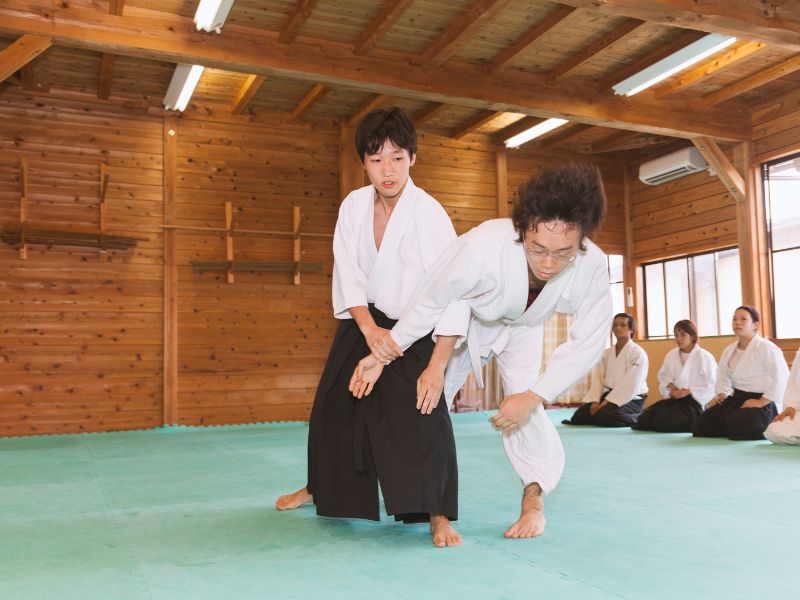
A typical Aikido practice session usually starts with a bow. This is a sign of respect for the dojo, the other students, and the instructor. The etiquette of aikido extends beyond just the bow, though. One must always be respectful, appreciative, and protective of all beings.
This attitude must be carried throughout the entire practice session.
Physical strain, whether during conditioning or in sparring against others, is part and parcel of Aikido. As such, practitioners need to maintain good manners and a positive attitude whenever they're in aikido class.
Aikido teaches you how to handle violence, but it still ultimately strives for peace, so never let your ego get in the way during your training.
Also remember that non-resistance is an essential element of proper aikido technique execution. Intercepting, deflecting, and redirecting an attack utilize the momentum and inertia of the attack.
Note that non-resistance does not mean being passively overpowered by the attack. But if you can avoid physical conflict, then you absolutely should.
It is also always important to maintain good posture and a relaxed body. Good posture includes maintaining your balance and keeping your center of gravity low. This helps you to be more aware of your surroundings and to respond more effectively to any situation.
Maintaining a relaxed body allows you to move more freely and makes it less likely that you will be thrown off balance by an attacker.
Similarly, be sure to focus on your breathing during aikido practice. This helps to calm and focus the mind, allowing for better decision making and execution of techniques.
Next, warm-up exercises are often done, including stretches and rolling or breakfalls (ukemi). These help to prepare the body for physical activity and prevent injury.
Following warm-ups, the instructor will lead the class through various aikido techniques and movements. These often involve practicing with a partner, called uke-nage (uke being the attacker, nage being the defender).
Practice with a spirit of cooperation, not necessarily competition. The goal is to mutually improve each other's technique and understanding of aikido principles, not to overpower or dominate the other person.
The practice session may also include weapons training, using a wooden sword (bokken) and wooden staff (jo). Weapons techniques often involve similar principles to those practiced with empty-handed techniques, but provide another layer of complexity and challenge.
What A Typical Krav Maga Training Session Looks Like

A krav maga practice class will typically start with a warm-up. The warm-up will usually consist of some light calisthenics and stretching. This is important to help prevent injuries and to get your body ready for the more strenuous activity to come.
The next part of the class will focus on techniques. You will learn various self-defense techniques that you can use in a real-world situation. These techniques will be practiced with a partner so that you can get a feel for how they work.
After the technique portion of the class, there will be a sparring session. This is where you will put your newly learned techniques into practice.
You will be paired up with another student and you will take turns attacking and defending. This is a great way to see how well you have learned the techniques and to also get some real-world experience.
The last part of the class is the cool-down. This is important to help your body recover from the strenuous activity it has just undergone. The cool-down will usually consist of some light stretching and deep breathing exercises.
Krav Maga classes are typically 1 to 2 hours long. They are usually held once or twice a week, although some schools may offer more frequent classes.
If the last few sections have been a bit full-on or a bit too technical, you will like this next section! Why? Because who doesn't love a good martial arts flick? Both Aikido and Krav Maga have been featured in a number of films and TV shows, so if you want to learn more about them, then entertain yourself with the following 👊
Aikido Movies

These are some of the top movies and shows with Aikido in them:
- The Blind Swordsman: Zatoichi (2003)
- The Last Samurai (2003)
- Kill Bill: Vol. 1 (2003) and Kill Bill: Vol. 2 (2004)
- Street Fighter (1994)
- Ong-Bak: The Thai Warrior (2003)
- The Challenge (1982) TV series
Aikido can also be seen in popular shows such as:
- Daredevil (2015) TV series
- Arrow (2012) TV series
- Alias (2001-2006) TV series
- Chuck (2007-2012) TV series
- Xena: Warrior Princess (1995-2001) TV series
Some of the best movies with Krav Maga in them are:
- The Bourne Identity (2002)
- Taken (2008)
- RED 2 (2013)
- Triple Frontier (2019)
- The Kingdom (2007)
Conclusion: Aikido Vs. Krav Maga
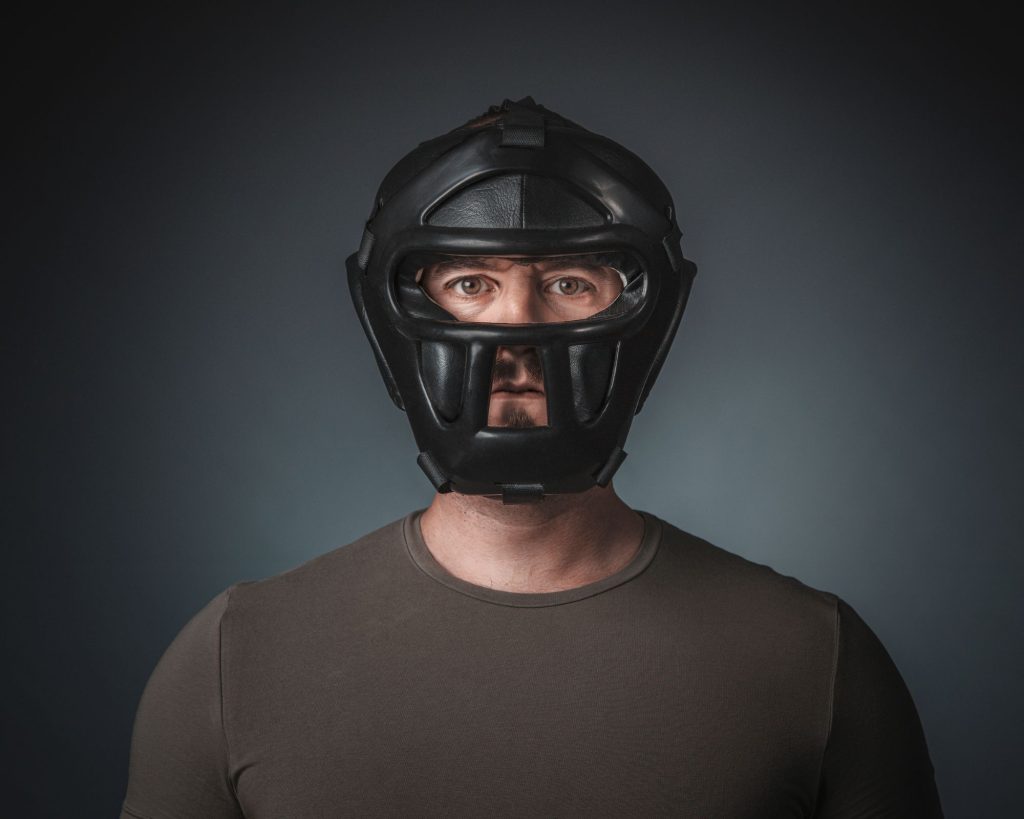
I hope you now have a deeper understanding of Aikido and Krav Maga. In all truth, it is not about which discipline is "better" as they each have their pros and cons.
If you do plan on starting classes for either, please check out my other related posts, as I have tried my best to answer all the FAQs related to the art.
Feel free to share this post and any graphics you like, and of course, if you have any questions or thoughts, drop them below or shoot me an email, and I will be happy to assist 🙂
That's not all we've got on Krav Maga. Check out more about it here!
[author-box-jpx-fitness]
